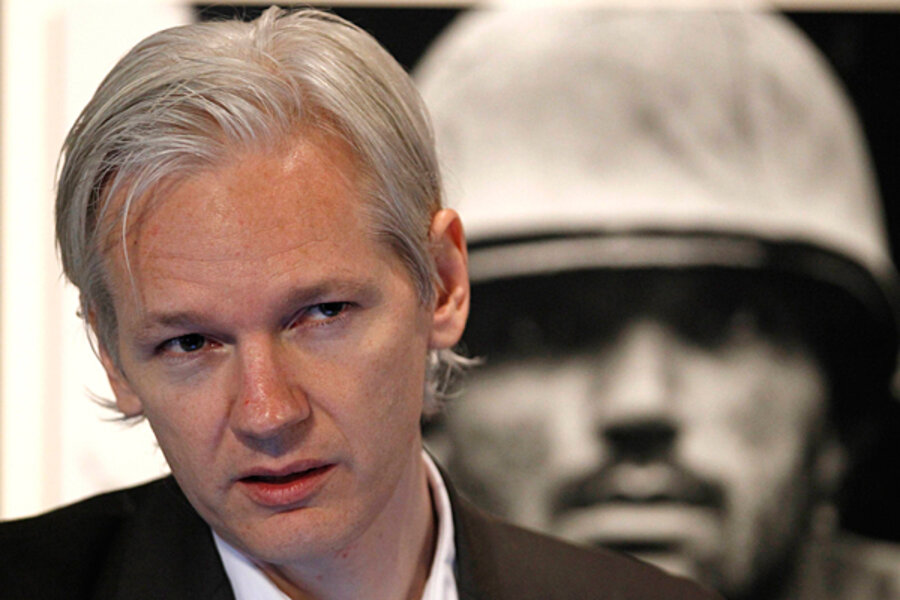Julian Assange: the hacker who created WikiLeaks
Loading...
The man behind WikiLeaks, Julian Assange, is coming in for both praise and criticism after his classified information clearinghouse published thousands of secret military documents relating to the war in Afghanistan Sunday.
Mr. Assange’s work is much better known than he is. The newest leaks have uncovered evidence about a number of things previously reported but not confirmed, including:
• Numerous incidents of American forces killing innocent Afghan civilians.
• The existence of a secret unit of American special forces tasked with killing or capturing top Al Qaeda and Taliban leaders.
• Worries among US officials that elements of Pakistani intelligence were aiding the Taliban.
However, the documents have also sparked renewed interest in the WikiLeaks founder, whose roots as a computer hacker inform his ethos, which he terms “scientific journalism” – a desire to get to underlying facts by turning to encyclopedic volumes of raw material.
Assange was born in northeast Australia in 1971 and lived a nomadic life in his early years. According to a profile of Assange in a June issue of The New Yorker, he and his mother moved 37 times before he turned 15. With conventional education rendered impossible, Assange self-taught at libraries and learned to program on early PCs.
Programming quickly became hacking once Assange got an Internet connection, and soon he was accessing government networks and bank mainframes. He was arrested in 1991 and charged with more than 30 criminal counts related to his hacking. Facing as many as 10 years in prison, Assange struck a plea deal.
During sentencing, the judge ruled that Assange only had to pay a fine. Assange's hacks were not malicious; they were the harmless result of “inquisitive intelligence,” said the judge.
The same “look/see” mentality that drove Assange’s hacking now drives WikiLeaks. Assange described his organization to The New Yorker as “scientific journalism,” comparing it to biology researchers publishing their data sets along with their papers. In recapping a talk by Assange at London’s Center for Investigative Journalism earlier this month, a reporter for the British newspaper The Guardian cheekily pointed out that “if Assange was producing this article, he would post the rambling hour-and-a-half talk he delivers” instead of quoting from it.
“Journalism should be more like science,” Assange told The Guardian. “As far as possible, facts should be verifiable.”
Though Assange’s most recent, well-known projects have had an antiwar bent – the recent Afghan war leaks, the infamous “collateral murder” video of a US helicopter crew gunning down a group that included two Reuters journalists in Iraq – his site does not appear to have an obvious ideology beyond exposing secrets.
In other projects, Assange published a trove of text messages sent in the US on September 11, 2001, and e-mails from the University of East Anglia’s Climate Research Unit, which led many to believe that scientists were suppressing anti-global warming research and results.
Related:





